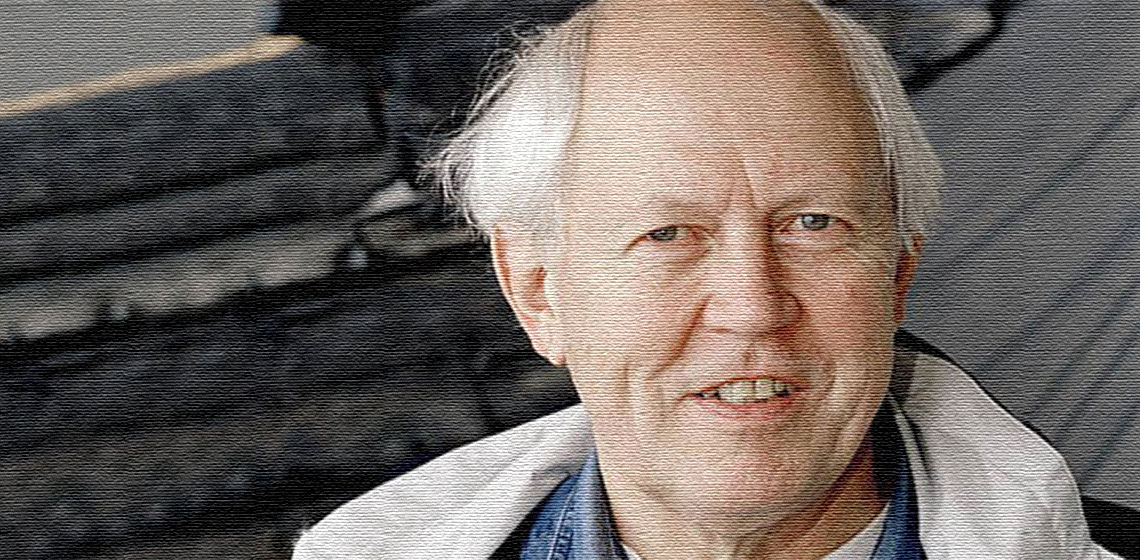
On 14 October 2011, Ole Crumlin-Pedersen passed away after a long period of illness, aged 76. Ole Crumlin-Pedersen, born 24 February 1935 in Hellerup, Denmark dedicated his life to maritime cultural heritage, maritime archaeology and old ships. He was a pioneer who, through his professional engagement and an almost unbelievable capacity for work, developed an entirely new area of archaeological fieldwork. He changed our view of the world of the past, and gave us new glasses with which to view history. The Viking Ship Museum at Roskilde stands as the most striking trace of what he leaves behind.
Ole’s remarkable career began with the five Viking ships from the Roskilde Fjord, and the construction of a museum around them. This was a pioneering job which demanded ingenuity, new thinking and co-operation across disciplinary borders. The result was worthy of admiration, and the methodology became the model for work with archaeological ship-finds throughout Europe.
Ole did things properly, with respect for the system. He was not rebellious. But he was, in every way, unconventional and innovative. With his starting point in the history of ships, he approached problematic areas such as the levy system, cult and mythology of the Viking Age – unfettered by the academic constraints that can hinder archaeologists, historians and religious historians. This gave his research a surprising liveliness. He was occupied with problems and results, and in the interpretation of ship finds he went beyond the boundaries of traditional sources and disciplines, with a sure and certain hand.
Ole was strategic and had a sense for meaningful alliances. He understood the meaning of titles and positions as tools to get a job done in this world. But he was as ‘unsnobbish’ as few can be. He met others with openness and hope, and assessed them based on their interests, engagement, commitment and ability to deliver. He created a vigorous environment of committed people who worked for the cause – sometimes with a salary and often without. He believed in the co-operation between widely different approaches and experiences in the endeavour towards new insights, and was the inspiration, supervisor and mentor for many generations of maritime archaeologists and others with interest in the subject.
We, who worked closely with Ole, knew him as a man with a mission. Professional to the bone. With a heart that beat in rhythm with the breaking of the waves. A man who never spared himself, and who demanded much from others. Goal-oriented and uncompromising. Generous and merciless. Always on the go. Close personal relationships did not come easily to him. But it meant so much for him to see what his work meant for others – not least for the young. And with his brilliant eye for what worked, he was good at surrounding himself with people who made up for those areas that he himself did not master.
The last time we saw Ole at the museum was a beautiful day in August. The museum was swarming with staff, volunteers and visitors who were all taking part in the Water and Wind Festival. Boats were being built, rope was being made, sail was being woven. The harbour was full of boats and cheer. In the middle of it all stood Ole with his daughter. With happiness and pride, he expressed that which can be said about his life’s work: ‘Think, we created all of this!’.
The pictures of dr. phil. h.c. Ole Crumlin-Pedersen is taken by Werner Karrasch.

Support Sunita School
The family of Ole Crumlin-Pedersen have requested that donations be made to Sunita School in Nepal, in place of flowers. Sunita School offers a two-year practical and theoretical education to illiterate girls over 12 years old, providing them with a foundation from which to build a new life for themselves and their families.
Donations can be made to Sparekassen Thy, Denmark:
Reg. no.: 9111
Account no.: 0001692275
SWIFT: STHYDK21
IBAN: DK2891200001692275